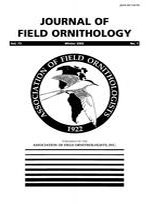Austral migrant birds were banded during austral fall (March–April) and spring (October–November) in the Chaco of Santa Cruz, Bolivia. The Tyrannidae was the most common family captured in terms of number of species and total individuals. The difference in capture numbers between the austral spring and fall seasons was the greatest for the Fuscous Flycatcher (Cnemotriccus fuscatus), although most species exhibited little change among seasons. In terms of numbers of captures across each season, no apparent trends in migratory timing were evident. The Creamy-bellied Thrush (Turdus amaurochalinus) exhibited similar fat class distributions among seasons. Within-season trends showed that in fall Creamy-bellied Thrushes with lower fat levels arrived at the study site earlier than fatter birds. Most migrant species captured were not sexually dimorphic or in breeding condition, so sexing was generally not possible. Our lack of knowledge on habitat use and migratory routes of austral migrants in the Chaco, combined with the current high rate of habitat destruction in the region, makes an understanding of the migratory patterns of these birds important.
How to translate text using browser tools
1 July 2002
Patterns of austral bird migration in the Bolivian Chaco
Alex E. Jahn,
Susan E. Davis,
Ana María Saavedra Zankys
ACCESS THE FULL ARTICLE
It is not available for individual sale.
This article is only available to subscribers.
It is not available for individual sale.
It is not available for individual sale.

Journal of Field Ornithology
Vol. 73 • No. 3
July 2002
Vol. 73 • No. 3
July 2002
banding
Bolivia
fat
migration
Seasonality




